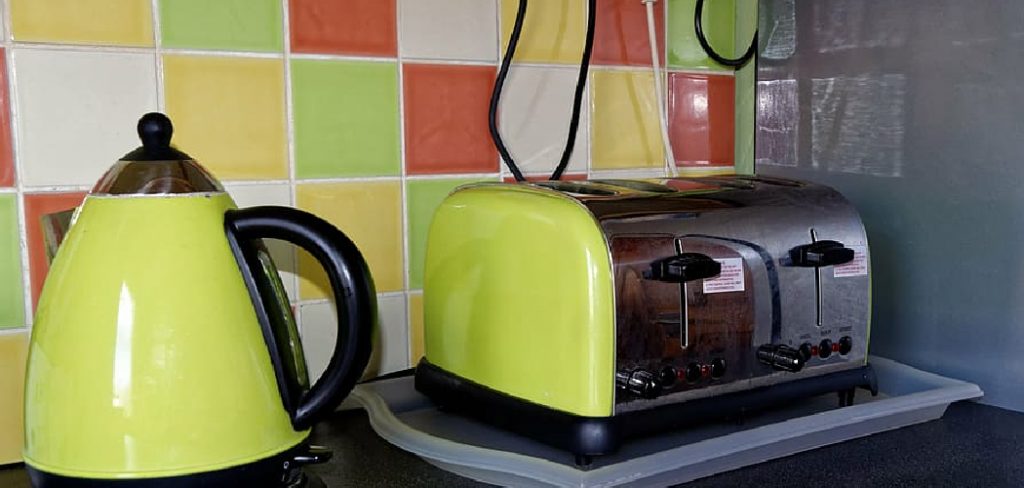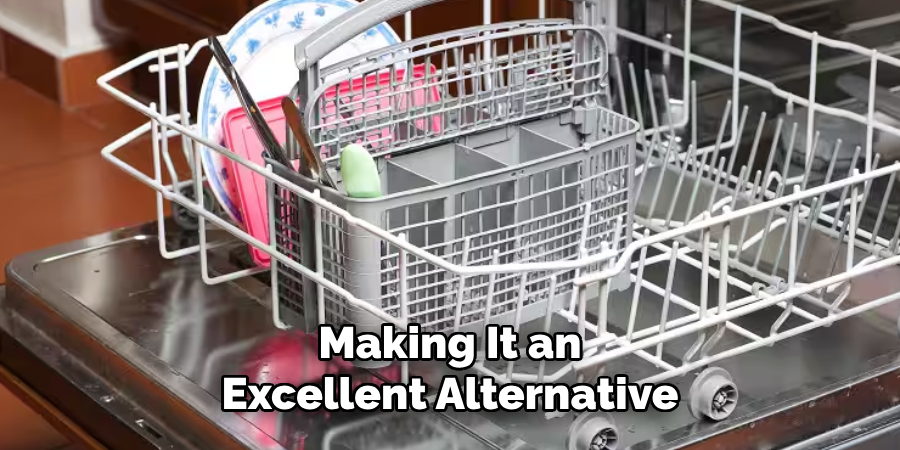Lime deposits can build up in your dishwasher over time, affecting its performance and leaving dishes with cloudy spots. These deposits are caused by hard water, which contains high levels of minerals like calcium and magnesium. Fortunately, removing lime deposits is a straightforward process that can help restore your dishwasher’s efficiency and ensure your dishes come out sparkling clean. This guide will walk you through simple and effective methods for how to get rid of lime deposits in dishwasher.

Why Lime Deposits Form in Dishwashers
Lime deposits form in dishwashers primarily due to hard water. Hard water contains an elevated concentration of minerals, such as calcium and magnesium, which can accumulate over time. When water is heated during the dishwasher cycle, these minerals precipitate out and adhere to the internal surfaces of the machine, including the spray arms, heating elements, and walls.
This buildup can become more pronounced if the dishwasher is used frequently and water hardness levels are particularly high. Without regular cleaning, these deposits harden and become more difficult to remove, impacting both the dishwasher’s performance and the cleanliness of your dishes.
Signs of Lime Buildup in Your Dishwasher
Recognizing the signs of lime buildup in your dishwasher is essential to address the problem before it worsens. One of the most common indicators is a white, chalky residue on the interior surfaces of the dishwasher, including the walls, racks, and spray arms. You may also notice that your dishes, particularly glasses and utensils, have cloudy spots or a gritty texture even after a complete wash cycle.
Additionally, the dishwasher may seem less effective in cleaning, with water pooling or improper spraying due to clogged spray arms. Over time, lime buildup can also lead to strange odors as minerals trap food particles and moisture, creating an environment for bacteria to grow. Addressing these signs early can help maintain your dishwasher’s performance and prolong its lifespan.
10 Methods How to Get Rid of Lime Deposits in Dishwasher
1. Deep Clean with White Vinegar
White vinegar is one of the best natural cleaning agents to break down lime deposits due to its acidic properties. To use this method, fill a dishwasher-safe bowl with two cups of white vinegar and place it on the top rack of an empty dishwasher. Then, run a hot water cycle without detergent. The acetic acid in vinegar will help dissolve hardened mineral buildup while also deodorizing the interior. For tough buildup, soak a microfiber cloth in vinegar and wipe down the walls, racks, and spray arms before running the cycle.

2. Use Baking Soda for Extra Cleaning Power
Baking soda is a versatile household cleaner that acts as a mild abrasive to scrub away stubborn lime scale. After completing a vinegar wash, sprinkle a generous cup of baking soda on the bottom of the dishwasher. Run a short, hot water cycle to allow the baking soda to lift any remaining deposits, neutralize odors, and leave your dishwasher smelling fresh. This method is particularly useful when combined with vinegar, as the two substances work together to dissolve buildup effectively.
3. Harness the Power of Citric Acid
Citric acid, commonly found in lemon juice and specialized cleaning products, is another powerful solution for dissolving mineral buildup. You can use powdered citric acid by adding a packet (or approximately two tablespoons) into the detergent compartment and running a normal cycle with hot water. This method not only removes lime deposits but also helps to break down soap scum and grease. If you prefer a natural alternative, place lemon slices in a dishwasher-safe bowl and run a hot cycle.
4. Clean the Spray Arms to Improve Water Flow
Lime deposits often clog the tiny holes in your dishwasher’s spray arms, leading to reduced water pressure and inefficient cleaning. To address this, remove the spray arms (refer to your dishwasher manual for guidance) and soak them in a solution of warm water and vinegar for at least an hour. After soaking, use a toothpick, needle, or small brush to clear any blocked holes before rinsing and reattaching the spray arms. Keeping these components clean ensures optimal water distribution and prevents future buildup.
5. Descale with Lemon Juice for a Natural Refresh
Lemon juice contains natural citric acid, making it an excellent alternative to vinegar for removing lime deposits. Fill a dishwasher-safe cup with fresh lemon juice and place it on the top rack before running a hot water cycle. The acidity of lemon juice effectively dissolves stubborn deposits while also leaving behind a pleasant citrus scent. For a stronger effect, rub a lemon half directly on affected areas before running the cycle.

6. Use a Commercial Dishwasher Descaler for Heavy Build-Up
If natural solutions are not sufficient, a commercial dishwasher descaler can be highly effective in removing extensive lime deposits. These products are specifically formulated to break down mineral buildup and restore the appliance’s performance. Follow the manufacturer’s instructions, which typically involve running an empty cycle with the descaler. Regular use of a descaler can help maintain the efficiency of your dishwasher, especially in areas with extremely hard water.
7. Remove and Clean the Dishwasher Filter to Prevent Recurring Deposits
The dishwasher filter traps food particles and mineral deposits, making it a prime location for buildup. If the filter becomes clogged, it can lead to poor drainage and increased lime scale accumulation. To clean the filter, remove it from the dishwasher, rinse it under warm water, and scrub it gently with a soft brush and dish soap. For stubborn deposits, soak the filter in a vinegar solution for 30 minutes before rinsing and reinstalling it.
8. Inspect and Clean the Drain Hose for Unrestricted Water Flow
Lime scale can also accumulate inside the drain hose, restricting water flow and causing drainage issues. If your dishwasher is not draining properly, disconnect the hose and flush it with warm, soapy water. For deeper cleaning, soak the hose in a vinegar solution or use a flexible brush to remove blockages. Ensuring the drain hose is free from buildup helps maintain proper water circulation and prevents unpleasant odors.
9. Perform Monthly Maintenance Washes to Prevent Future Lime Deposits

Prevention is key when dealing with lime buildup. To keep your dishwasher running efficiently, perform a maintenance wash at least once a month. Run an empty cycle with either white vinegar, citric acid, or a commercial descaler on the hottest setting. This routine will help dissolve any early-stage mineral deposits before they become problematic, reducing the need for deep cleaning sessions.
10. Install a Water Softener to Minimize Lime Buildup
Since lime deposits originate from hard water, installing a water softener can be a long-term solution to prevent buildup. A water softener removes excess minerals from the water supply, reducing the likelihood of scale formation inside your dishwasher. If installing a full home softener isn’t an option, consider using dishwasher-specific water-softening additives or tablets to help prevent mineral accumulation.
Maintenance and Upkeep
Proper maintenance is essential to prolong the lifespan of your dishwasher and maintain its efficiency. Start by regularly cleaning the interior and exterior surfaces to prevent grease build-up and stains. Wipe down the door gasket and edges with a damp cloth to remove food particles and residue that could compromise the seal. Always scrape off large food scraps from dishes before loading them to prevent clogs in the filter or drain.
Inspect the dishwasher racks periodically for signs of corrosion or damage to the coating. Repair chipped areas with a dishwasher rack touch-up paint to prevent rust, which could affect the cleanliness of your dishes. Additionally, always check the spray arms and unclog any debris that may disrupt water flow.
Another key aspect of upkeep is monitoring the detergent and rinse aid levels. Use the correct type and amount of detergent compatible with your water’s hardness to avoid over-sudsing or under-cleaning. Refill the rinse aid dispenser when necessary to ensure sparkling dishes and streak-free glasses.

Scheduling professional inspections once a year can also help identify potential issues early on. Routine checks can address hidden problems, such as worn-out seals or faulty components, ensuring your dishwasher continues running smoothly without unexpected failures. By staying consistent with upkeep, your dishwasher can remain a reliable kitchen companion for years to come.
Conclusion
Lime deposits can significantly impact the performance and efficiency of your dishwasher, but with the right cleaning and maintenance routine, you can effectively remove and prevent buildup. Whether using natural solutions like vinegar and lemon juice or opting for commercial descalers, keeping your dishwasher free from lime scale ensures sparkling clean dishes and a longer-lasting appliance. Implementing these ten methods as part of your regular dishwasher maintenance will not only improve cleaning performance but also save you from costly repairs in the long run. So, there you have it – a quick and easy guide on how to get rid of lime deposits in dishwasher.
Professional Focus
Angela Ervin, a former interior designer turned blogger, specializes in kitchen design and renovations. Through her website, she blends her passion for cooking with design expertise, sharing practical and creative ideas. Known for balancing functionality and beauty, Angela’s insightful content has made her a trusted voice in home design and lifestyle.
About the Author
Angela Ervin, an experienced interior designer and blogger, combines her passion for kitchen renovations with storytelling. Living in Petersburg with her family, she enjoys cooking and testing her projects firsthand. Known for her humor and relatable style, Angela shares creative, functional design insights through her content, making her a trusted voice in home design.
Education History
University: Virginia Commonwealth University
Degree: Bachelor of Fine Arts (BFA) in Interior Design
- Angela’s education at VCU focused on mastering core interior design principles, including spatial planning, color theory, materials selection, and sustainable design practices.
- She gained hands-on experience through studio projects and collaborative design exercises, which honed her ability to create functional and aesthetically pleasing environments.
- Her coursework also emphasized problem-solving and practical applications of design, preparing her for real-world projects like her self-directed kitchen renovations.
- The program’s strong foundation in both technical skills and creative expression shaped Angela’s ability to seamlessly integrate form and function in her work.
